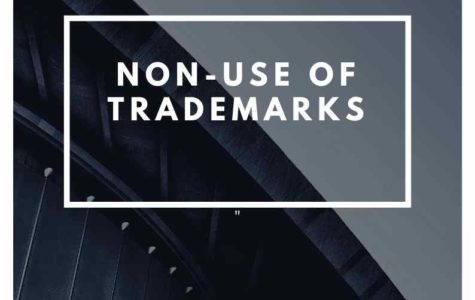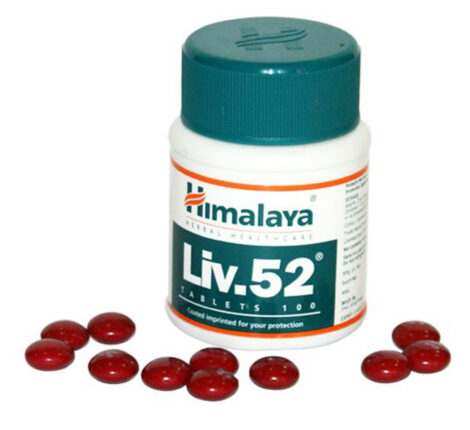Critical Overview Of The Effect Of Non-use Of Trademarks
Introduction:-
The practice of the trademark by unlawful means or illegal means by producing it in trading is known as trademark piracy. If there is a breach of trademark, the proprietor of the registered trademark can take legal action and for an unregistered trademark, the only option is passing off.
The mark can lose its uniqueness by non use, where non use is on the part of registered trade mark holder but not on relation of exterior factors beyond the control of such registered trade mark holder. Thus it cannot be doubted that granting of relief under Section 46 is a discretionary relief and the Legislature in its wisdom has provided period which must lapse before an application may be made, however, the provision of the Act is silent with respect to the starting time of limitation.
The Indian trademark law is far more laidback in comparison and certainly takes a broader view of “use” of the mark. For starters, rectification/cancellation procedures can only take effect when there is an objection to the non-use of the mark by a third party. Standing as it is, registration does not get cancelled, even though the mark may not have been in use for a considerable period of time, since registered trademark owners in India are not required to periodically prove ongoing use of their marks in order to maintain registration.
India has confirmed certain countries as convention countries, which afford to citizens of India similar privileges as granted to its own citizens. A person or company from a convention country, May within six months of making an application in the home country, applies for registration of the trademark in India. If such a trademark is accepted for registration, such foreign national will be deemed to have registered his or her trademark in India, from the same date on which he or she made application in the home country.
Function of trademark:-
The function of the trademark is to distinguish the goods or services of one undertaking from those of other undertakings. The vital function of the trademark, to recognize and distinguish the source of origin, has while other functions have become at least as essential the communication, advertising and investment functions. The scope of the trademark corresponds with the classes that delegate one or more goods and services. According to this specificity principle the senior trademark is safeguarded against identical marks for the same goods and markets keep on growing and trade and business go on expanding, consequently an increasing number of trademarks are registered all over the world. Trademarks are, generally, words, names, symbols, devices, designs, or other distinctive signs or marks which serve to identify the source of goods or services and distinguish them from those sold by others.
Exclusive right:-
A trademark will not always reveal the name of the source, but if consumers understand that all of the goods or services sold under a particular mark emanate from a single entity, or from others approved by that single entity, then such mark functions as a trademark. Trademarks also symbolize the goodwill, which a company has established for a product or service, and provide protection for the company’s investment in that goodwill. Moreover, trademarks perform an important role as advertising tools for their owners. They aid consumers because trademarks represent consistent quality. Trademarks are exclusive rights conferred on the owner.
Duty cast onto the registered proprietor not only to show that there is no intentional abandonment or intent to use the trade mark, in relation to the goods, but there must exist a definite intent to use the mark and a continuation of the same throughout the entire period as envisaged in the statute but all his efforts were rendered fruitless by reason of the statutory ban on imports. The affidavit of Buttress, however, negates such a situation and as such the issue under Section 46(3) being answered in favour of the appellant does not and cannot arise”.
Case laws:-
In Ruston and Hornby Ltd. v. Zamindara Engineering Co., it was held that since the trademark has been registered in the name of the plaintiff validly which was renewed, the defendant had no right to use the said mark of the plaintiff as it would amount to infringement of the plaintiff’s exclusive rights. In that case, noticeably it was established as a fact that, non-use of the trademark by the plaintiff was not willingly but due to limitations imposed by the Government in respect of dairy business and in the circumstances, there was no abandonment.
In Avis International Ltd. v. Avi Footwear Industries and Anr., the plaintiff was a registered proprietor of trademark ‘AVIS’ in respect of readymade garments since 1.8.1979. In the suit for injunction filed by the plaintiff for restraining the defendants from using it, the defendant took the objection that there was non-user of the trademark by the plaintiff for five years of more which was disputed by the plaintiff.
In K.R Beri & Co. vs. The Metal Godds Mfg. Co Pvt Ltd. and Anr, the Division Bench in liue of Section 48(2) held that an unregistered user of the trade mark even with the consent of the proprietor cannot be construed to be a registered user under Section 48(1) and such construction renders violation of sub-section (2) of Section 48. On strict interpretation, the view of the Division Bench may be correct but it is not correct to hold that by a bona fide user of an unregistered user when connection between the proprietor of the trade mark and the permitted user in relation to passing off the goods under the trade mark are proved, it does not render violation of sub-section (2) of Section 48.
A trademark may be removed from the register for non-use incessantly for five years except when it is shown that the non-use has been due to existence of ‘special circumstances’ in the trade and not due to any intention to abandon or not to use the trade mark. In the instant case, the applicants failed to prove such ‘special circumstances’. The Court said that word ‘use’ does not necessarily mean an imply actual physical sale and even more advertisement without having even the existence of the goods can be said to be a ‘use’ of the mark1.
1AIR 1980 Delhi 299
Non Use:-
A registered trademark can be canceled within five years of the date of the date of completion of the registration procedure the mark has not been put to legitimate use by the proprietor or anybody who has his consent and there are no proper reasons for non use.
Indian trade mark does not require filing of an affidavit for the uninterrupted use of trademark however non-use of trade mark for five years is a ground for removal from the register. Under the Indian trade mark system once the owner of a mark registers the mark it is sufficient for such registration to be prima facie evidence of validity.
Effect of non-use of Trademark:-
Result of Non-Use on Trademark both in India as well as in USA the main effect of non-use is removal of the trademark from the trademark registry. However, sometimes new goods or services are launched to the market using trademarks which have not been re-registered or which have not been used for a very long period of time. In such cases, most of the trademark proprietors keep quiet about the new trademark which infringes their existing mark because of the fear of the new user attacking the trademark on the ground of non-use and in such a case it would result in the trademark being completely removed from the registry. In India, rectification on the ground of non-use arises usually in the course of opposition proceedings or infringement action as a counterblast. Where the proprietor has not used the mark for more than five years and has not taken any steps to use it may tend not to object to the registration of similar marks by others or launch infringement proceedings.
Conclusion:-
The phase of non-use of a trade mark for five years as a ground for removal should be reduced to three years under the Indian law. To make our country a true global powerhouse there is a need of provision, for regulation of cyber crimes especially cyber squatting, not only under trade mark law but even under information and technology law. Then only our country has a golden chance to become an IT superpower in this millennium. In Indian legislation there should be a separate provision for remedies for similarity of famous marks. Provision should be made to the effect that, apart from bringing an action for infringement of trade mark, the owner of trade mark could initiate a dilution suit for claiming special damages, as famous marks have close association with goodwill of the business.
India seems to be lenient in accepting excuses for non-use. On a comparative basis USA seems to be far ahead as the courts have held even cases of strikes as justifiable reason for non-use. India also permits non-use ‘due to special situation in the trade. However, it is not very clear as to what extent the courts would accept what is meant by special circumstances in the trade’ as the cases which have come before the courts mostly deal with clear cut cases such as import restrictions, government policy etc. Indian courts seem to have tried to accommodate the needs of the Indian scenario when dealing with trademark cases.




